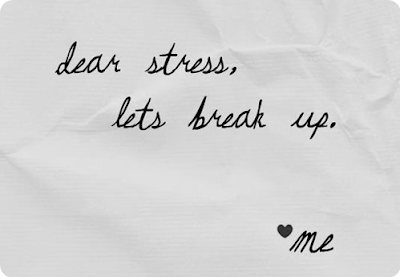FOURTEEN days, so much to do! Here’s our school holiday picks for adventurous families.
KIDS WONDERLAND
Roll up through the Luna-like laughing mouth into a 4000sq m big top for three hours of indoor games, activities, live shows, exhibits — and even massages for parents run off their feet. Oh, did we mention all-inclusive unlimited rides?
When and where: July 9-12, 8am-11am, 12pm-3pm, 3.45pm-6.45pm, Hertha Rd Reserve, Cedric St, Stirling.
Cost: Children $25+bf, adults $10+bf
Bookings/info: www.kidswonderland.com.au
KIDS WONDERLAND GRAND OPENING
Perth’s Kids Wonderland features rides and entertainment for children and adults over the school holidays at Hertha Road Reserve in Stirling. Darren and Alexie Beygelaar and daughter Jenna. Photo: Stewart Allen
MISTER MAKER
Paper, scissors, rock! Mister Maker makes contraptions like trains and spaceships out of everyday detritus like toothpaste boxes and toilet rolls and is bringing his musical sidekicks The Shapes to Perth for the first time for some rollicking edu-entertainment.
When and where: July 14-15, Perth Concert Hall.
Cost: From $40
Bookings/info: www.ticketek.com.au
Pack up your troubles with Mister Maker.
Pack up your troubles with Mister Maker. Source: Supplied
HOUSE OF DREAMS
There are two ways to see Hi-5 these holidays — in full or for free, The fivesome will be at two shopping centres to give fans a sneak peek of their House of Dreams tour.
When and where: July 11, 11am-12:30pm, Westfield Whitford City; and 2pm-3:30pm at Westfield Carousel.
Cost: Free
When and where: July 14-15, 10am and 1.30pm, Regal Theatre, Subiaco
Cost: From $35
Bookings/more info: www.hi-5world.com
No need to slumber: see Hi 5’s House of Dreams.
No need to slumber: see Hi 5’s House of Dreams. Source: Supplied
DISNEY FROZEN FRENZY
Did someone say Frozen?! Expect a stampede (in a good way) as Disney characters, including Elsa and Anna, come together for meet-and-greets and daily activities. Armed with a Disney map, families can go on an adventure uncovering Frozen, Planes, Cinderella, Toy Story, Monsters Inc and Mickey Mouse. A Frozen wax ice-skating rink is the icing on the cake.
When and where: Daily-July 12, various locations within Karrinyup Shopping Centre.
Cost: Free
More info:www.karrinyupcentre.com.au
GALAXY GIRL
A planisphere (or star wheel) is a useful astronomy tool that helps identify stars and constellations in the night sky. Galaxy Girl from Stargazers Club WA will step in to show budding astronomers how it’s done without getting up in the middle of the night.
When and where: July 11, 10am-11am, Australian Geographic store at Karrinyup Shopping Centre.
Cost: Free
Bookings/more info: www.stargazersclubwa.com.au/planisphere
SPACE JUNK
Fifty years after launching into space, we’re left with a troubling legacy: a growing ring of orbiting debris. Scitech’s newest planetarium show, Space Junk, may shock you as it looks at what’s out there.
When and where: Daily-July 19, Scitech, City West Centre, 98 Railway St, Perth.
Cost: $11 children, $17 adult
Bookings/more info: www.scitech.org.au
FOSSIL FOSSICKING
Did you know the Gogo Fish is WA’s fossil emblem? Discover more fun facts about our State’s ancient fossil discoveries and creatures that lived in WA’s ancient oceans.
When and where: Daily-July 19, 10.30am-1pm, Museum of WA Discovery Centre, Perth Cultural Centre.
Cost: $2 per child
More info: www.museum.wa.gov.au/whats-on/school-holidays/perth
BOAT BONANZA
Build and race balloon-powered boats while uncovering the secret to Australia’s success in one of the most famous yacht races in this maritime “time-trekker’’ challenge which allows kids to get up close to maritime treasures that are otherwise out of bounds to regular museum goers.
When and where: July 16-18, 9.15am — 12.30pm at the WA Maritime Musuem, Victoria Quay,
Fremantle.
Cost: $38 a child
Bookings/more info: www.museum.wa.gov.au/whats-on/school-holidays
MINECRAFT CAMPS
If your child is obsessed with Minecraft, you may wish to treat them to a meeting of the minds at a camp in which at least 24 kids collaborate and play together. The day includes lengthy breaks and a build competition.
When and where: Today-July 7, 9am-3pm. Kerry St Community School, Fremantle; July 13-14 9am-3pm State Library of WA, July 17 9am-3pm, Ellenbrook Community Library.
Cost: $65 a day
Bookings and further info: www.buddyverse.net/minecraft-camps
CITY PLAYGROUND PASS
The City of Perth says there are “47 awesome reasons’’ to make the CBD a school holiday destination. The Playground Pass takes parents and kids on an exploration of the city, with bonus offers including cut-price food and drinks and free stuff.
When and where: Today-July 19, Forrest Place and beyond.
Cost: Free.
Bookings/more info: www.visitperthcity.com or ph: 9461 3368
Get a taste of winter at Snow Slide.
Get a taste of winter at Snow Slide. Source: Supplied
CITY SNOW SLIDE
Take to the “slopes’’ in the heart of the city on either a 4m or 12m slide under a giant marquee — registration is essential.
When and where: Today-July 19, Forrest Place.
Cost: Free
Bookings/more info: www.visitperthcity.com or ph: 9461 3368
INTERACTIVE AQWA
Our aquarium goes hi-tech with a new app that kids use as a companion while following caves and crevices, open ocean and coral reefs. The app creates a storybook of little visitors’ journeys that theycan save, print and decorate at home. Holiday visitors can also go in the running to win an iPad mini.
When and where: Daily, 10am-5pm, Hillary’s Boat Harbour.
Cost: $18 children, $30 adults
Bookings/more info:www.aqwa.com.au
Climb the walls at Bounce INC, Cannington
BOUNCE IN WALL JAM
Climbing the wall has never been so much fun. Cannington’s indoor urban trampoline park has added Wall Jam programs to its regular sessions so older kids can learn and perfect tricks on The Wall in supervised evening classes. Wall Jam kids must be over 125cm.
When and where: Tues. & Thurs., 6pm-9pm, 1371 Albany Hwy, Cannington.
Cost: $17 but there’s a 2 for 1 deal on
Bookings/more info: www.bounceinc.com.au or 1300 000 540
Source




































